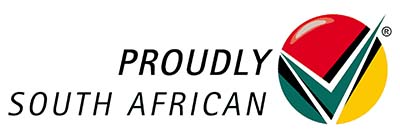Fixed asset management is a critical aspect of financial reporting, requiring businesses to adhere to established accounting standards.
International Financial Reporting Standards (IFRS) and Generally Accepted Accounting Principles (GAAP) provide frameworks that dictate how fixed assets are recorded, valued, and reported.
Understanding these standards ensures compliance, accuracy, and transparency in financial statements.
This article explores how IFRS and GAAP influence fixed asset management and reporting.
Understanding IFRS and GAAP
What is IFRS?
IFRS is a set of international accounting standards developed by the International Accounting Standards Board (IASB).
It aims to standardize financial reporting across global markets, enhancing comparability and transparency.
What is GAAP?
GAAP consists of accounting principles, standards, and procedures primarily used in the United States.
It is governed by the Financial Accounting Standards Board (FASB) and ensures consistency in financial reporting.
Key Differences Between IFRS and GAAP in Fixed Asset Management
While both IFRS and GAAP aim to ensure accurate financial reporting, they differ in several aspects of fixed asset management:
1. Asset Valuation
- IFRS: Allows both cost and revaluation models for asset valuation.
- GAAP: Primarily follows the cost model and does not permit revaluation after initial recognition.
2. Depreciation Methods
- IFRS: Requires component depreciation, where different parts of an asset are depreciated separately based on useful life.
- GAAP: Allows but does not require component depreciation.
3. Impairment Testing
- IFRS: Uses a one-step impairment test where assets are written down to recoverable amounts if impaired.
- GAAP: Applies a two-step impairment test requiring firms to first assess whether an asset’s carrying value exceeds its undiscounted cash flows.
4. Lease Accounting
- IFRS: Classifies all leases as finance leases, impacting fixed asset reporting.
- GAAP: Differentiates between operating and finance leases, leading to different financial statement treatments.
Ensuring Compliance with IFRS and GAAP
1. Accurate Asset Classification
- Properly categorize fixed assets to ensure compliance with valuation and depreciation guidelines.
- Regularly review asset classification to align with updates in IFRS and GAAP.
2. Regular Asset Valuation Reviews
- Conduct periodic revaluations in IFRS-based reporting environments.
- Ensure cost-based valuations align with GAAP requirements.
3. Consistent Depreciation Tracking
- Maintain accurate depreciation schedules that comply with required accounting standards.
- Use component depreciation where applicable under IFRS.
4. Proper Documentation and Reporting
- Keep detailed records of asset acquisitions, revaluations, impairments, and disposals.
- Align financial reports with relevant IFRS or GAAP disclosure requirements.
5. Leveraging Technology for Compliance
- Use asset management software to automate compliance tracking.
- Implement AI-driven accounting solutions to streamline financial reporting.
Conclusion
Understanding and complying with IFRS and GAAP in fixed asset management is essential for accurate financial reporting and regulatory adherence.
By ensuring proper asset valuation, depreciation, impairment testing, and documentation, businesses can achieve compliance while improving financial transparency.
Leveraging technology further enhances accuracy and efficiency in fixed asset management, ensuring organizations meet global and local accounting standards.








